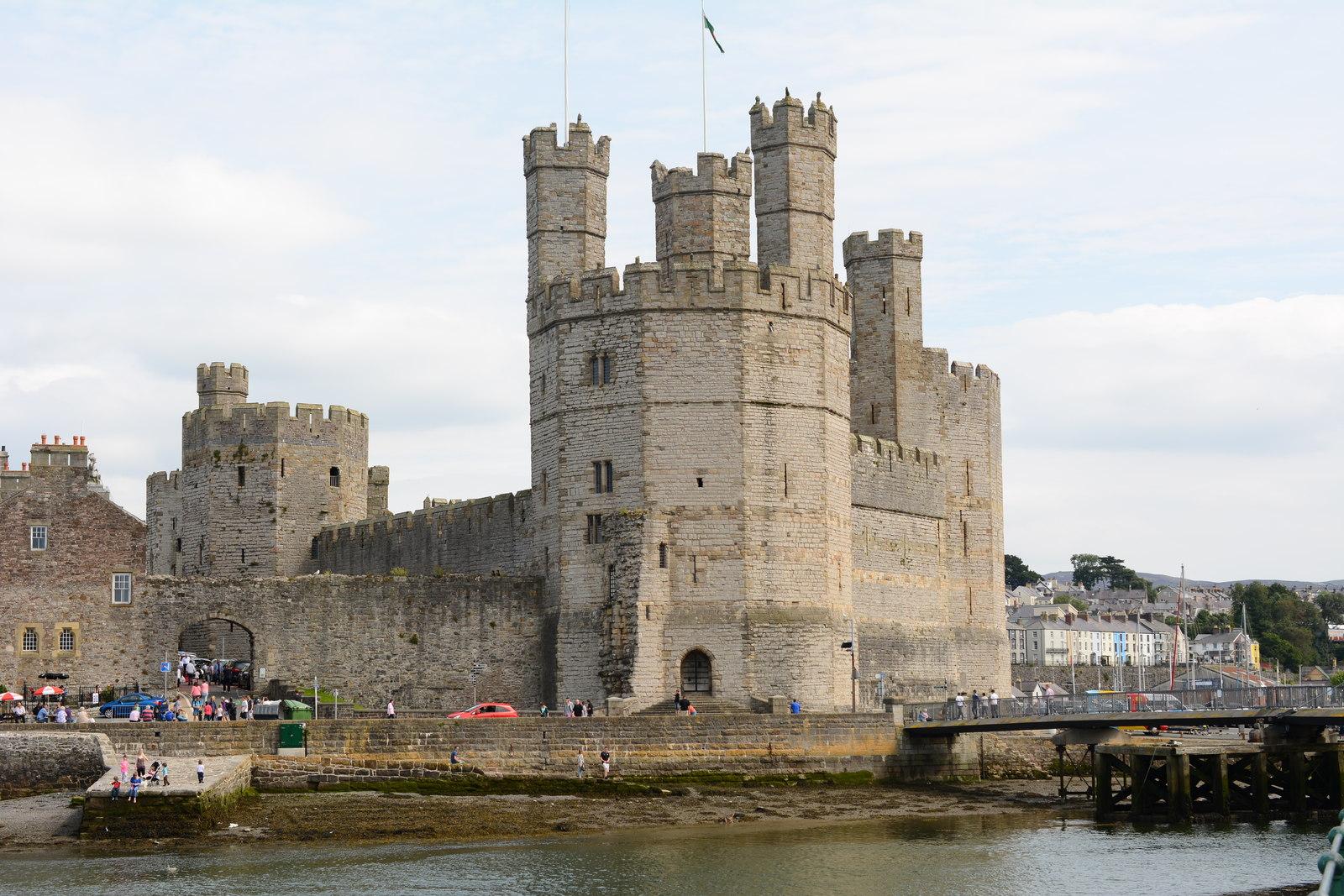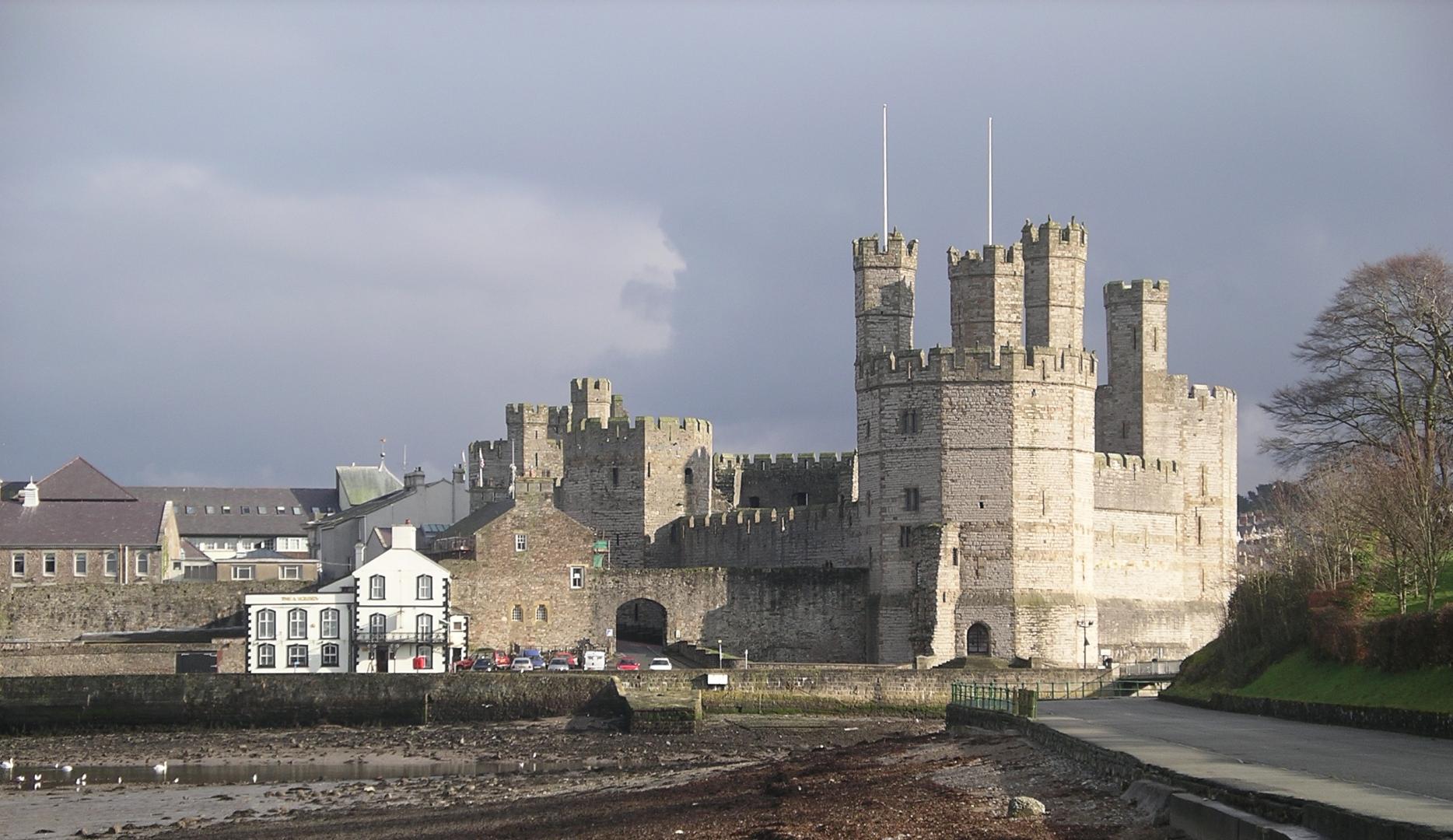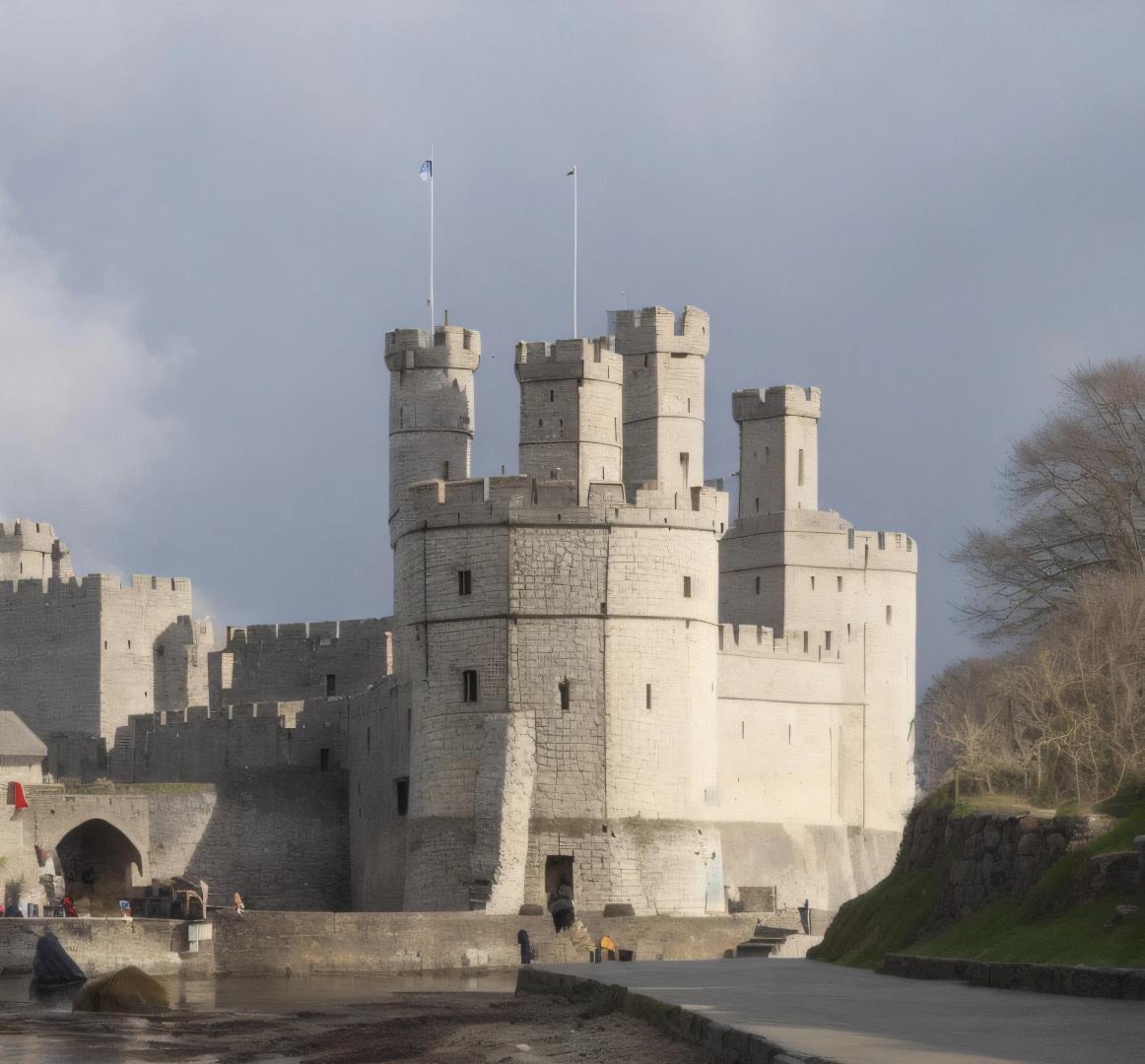
The imposing Welsh Caernarfon Castle has commanded the landscape along the North Wales coastline for over 800 years.

With its distinctive polygonal towers, intimidating battlements and integral role in British history, this iconic fortress has long occupied an important place in the nation’s heritage.
Built by King Edward I when he conquered North Wales in the 13th century, Caernarfon Castle became a symbol of English royal power. However, its origins stretch back much further as a site of local Welsh legend and myth. Throughout its long existence, stories of otherworldly omens, ghosts and hidden secrets have accumulated around Welsh Caernarfon Castle.
These enduring legends contribute to the mesmerising aura that clings to this historic castle to this day. Exploring the captivating blend of rich history and imagination makes a visit to Welsh Caernarfon Castle a one-of-a-kind experience.
A Site Steeped in History
Construction on Caernarfon Castle began in 1283 under the direct orders of Edward I, who had ambition to establish a seat of English power in the region. It was modelled after the walls of Constantinople with the purpose of demonstrating Edward’s strength and dominion. Throughout the Middle Ages, Caernarfon Castle served as an important military stronghold and centre of government.
The Birthplace of Legend
With its long, eventful lifespan over different eras, Caernarfon Castle has accumulated a unique mix of history, myth and legend. Ghostly apparitions are said to haunt its grounds, unexplained voices echo through its empty rooms and secret tunnels supposedly hide beneath its depths, or so the local myths go. These captivating stories have contributed to an aura of mystery and imagination that clings to Caernarfon Castle to the present day.
Myths and Legends of Caernarfon Castle
The Eagles of Caernarfon

One of the most enduring legends surrounding Caernarfon Castle involves the resident eagles. According to local lore, as long as eagles continue to nest at the castle, it will remain standing strong.
Omens in the Sky
This legend originated in the Middle Ages, when eagles were first spotted nesting in the upper towers and ramparts of the newly built castle. At the time, they were seen as a good omen – evidence that the fortress would stand tall and resilient, protected by these regal birds.
The original nesting pairs have long gone, but eagles can still occasionally be spotted around Caernarfon, perpetuating the myth. People eagerly watch for them, a symbolic sign of the castle’s might.
A Lasting Legacy
This legend remains alive centuries on, with many visitors still inquiring about the resident eagles. Though more mythical than factual in nature, the Eagles of Caernarfon have embedded themselves into local culture and the heritage of the castle.
The Ghostly Apparitions
In addition to its eagles, Caernarfon Castle is said to be home to various supernatural inhabitants that haunt its grounds. Some of the most well-known ghostly tales involve:
The Spectre of Queen Eleanor
Queen Eleanor, wife of King Edward I, passed away at Caernarfon Castle in 1290. Since then, some visitors and staff have reported seeing her ghostly form wandering the castle’s King’s Gate, the scene of her death, on the anniversary of her passing. Accounts describe a woman in medieval dress who lingers briefly before fading away.

The Black Knight

A ghostly apparition of a knight dressed in full black armour is said to patrol the castle walls at night. Sightings of the phantom knight date back to the 16th century. According to legend, he is the spirit of a former guard of the castle condemned to forever stand watch over it.
Disembodied Wails
Eerie disembodied moans, cries and wails have been reported echoing through the empty rooms and corridors of the castle by many visitors and staff over the years. Explanations range from ghosts to winds whistling eerily through the old stones. The unexplained sounds add to the ominous atmosphere.
Subterranean Secrets
In addition to ghostly tales, myths of secret tunnels and dungeons hidden beneath Caernarfon Castle have persisted for centuries, adding to its air of mystery.
The Legend of the Underground Labyrinth
Local legend tells of an extensive labyrinth of secret passages and rooms constructed underneath Caernarfon Castle. According to myth, previous inhabitants used these sinister hidden spaces for clandestine and nefarious purposes throughout history.
While some tunnels and underground chambers have been discovered over the years, the vast underground network that locals imagine likely does not exist. Still, the lack of conclusive evidence keeps the myth alive.

Fuelling Imaginations
The idea of a vast, mysterious world hidden just underfoot captures the imagination and has become ingrained in local culture. These myths are an integral part of the tapestry of intrigue that surrounds Caernarfon Castle to this day. Though likely more fiction than fact, the legends endure as a core part of the castle’s aura of enduring mystique.
The Enduring Allure of Myth
The myths and legends surrounding Caernarfon Castle have become inextricably woven into its rich history, enhancing its captivating, enduring allure.
Building a Timeless Legacy
These chilling tales of ghosts, secret passages and prophetic eagles have helped cement Caernarfon Castle’s reputation as a site steeped in history, imagination and intrigue. The stories are deeply ingrained in local culture, passed down through generations and sparking interest in new visitors.
Imagination Standing the Test of Time
While some legends may be more myth than fact, together they form a tapestry of folklore that has captured people’s imaginations throughout the centuries. The fanciful myths have become part of experiencing the magic and wonder of this historic castle.
A Site Where History Meets Legend
Caernarfon Castle continues to captivate all those who visit. Its extensive past collides with haunting myths, taking one back through time to an era of knights, conquests and mystical omens. Exploring this site where reality meets legend is an opportunity to step into an enduring realm of imagination, mystery and intrigue.
Where is Caernarforn Castle?
Castell Caernarfon, Castle Ditch, Caernarfon, Gwynedd, Wales, LL55 2AU, United Kingdom

















